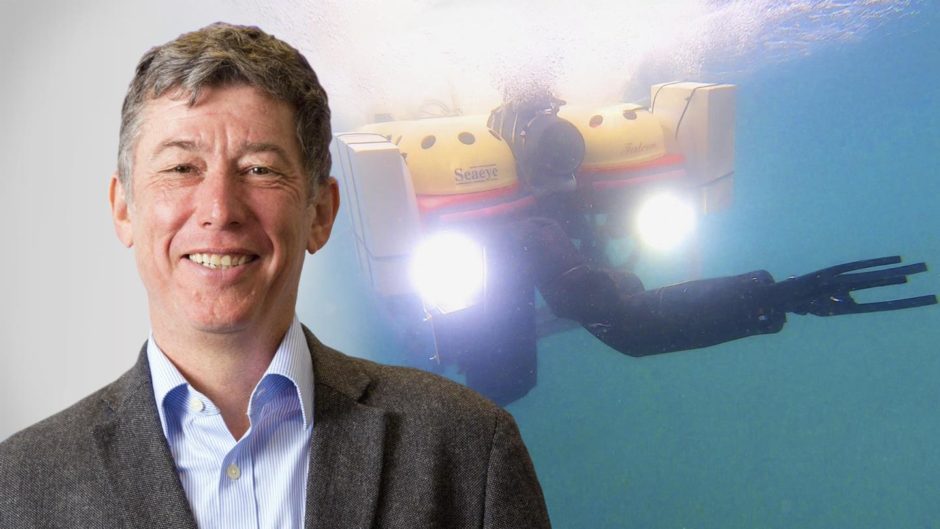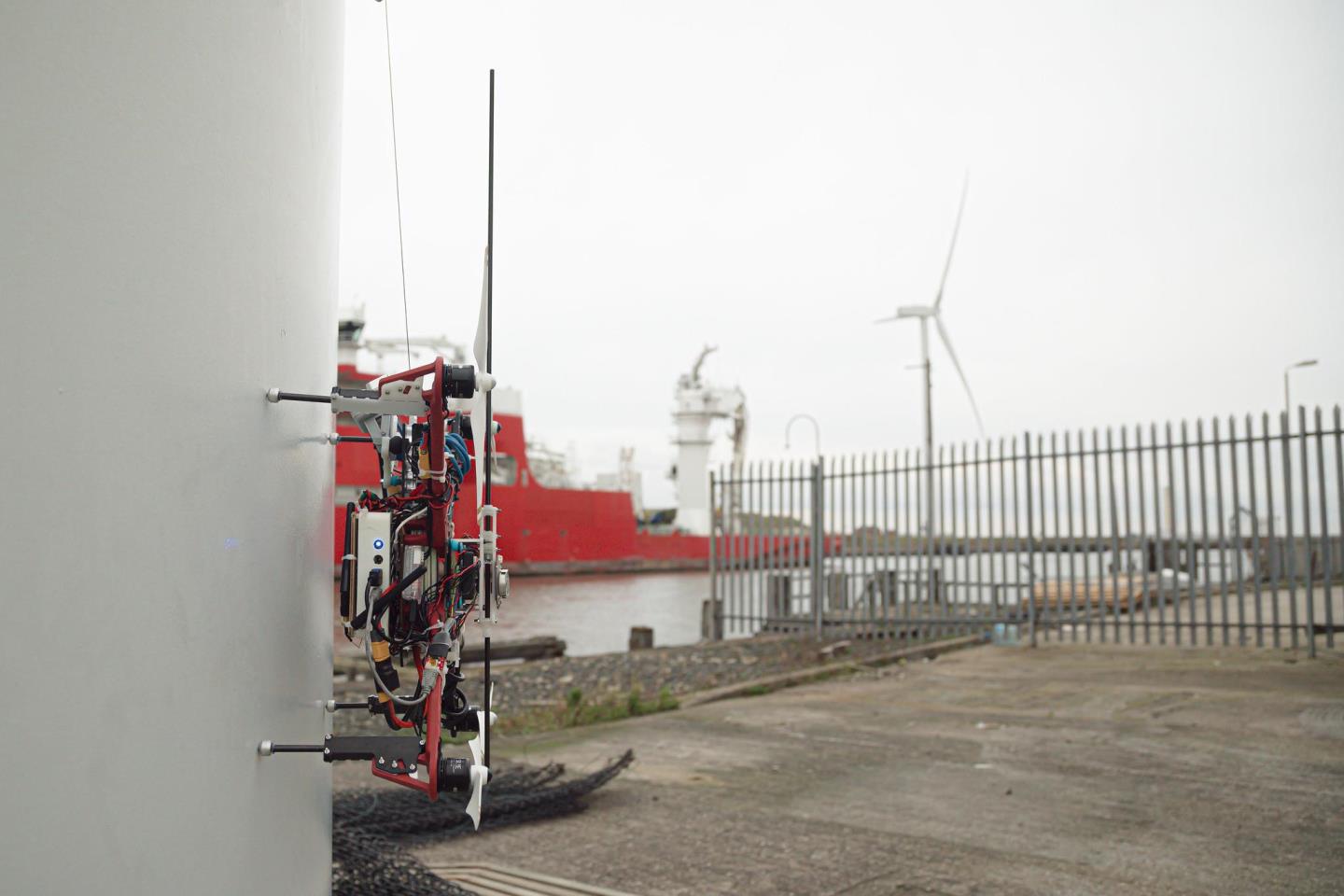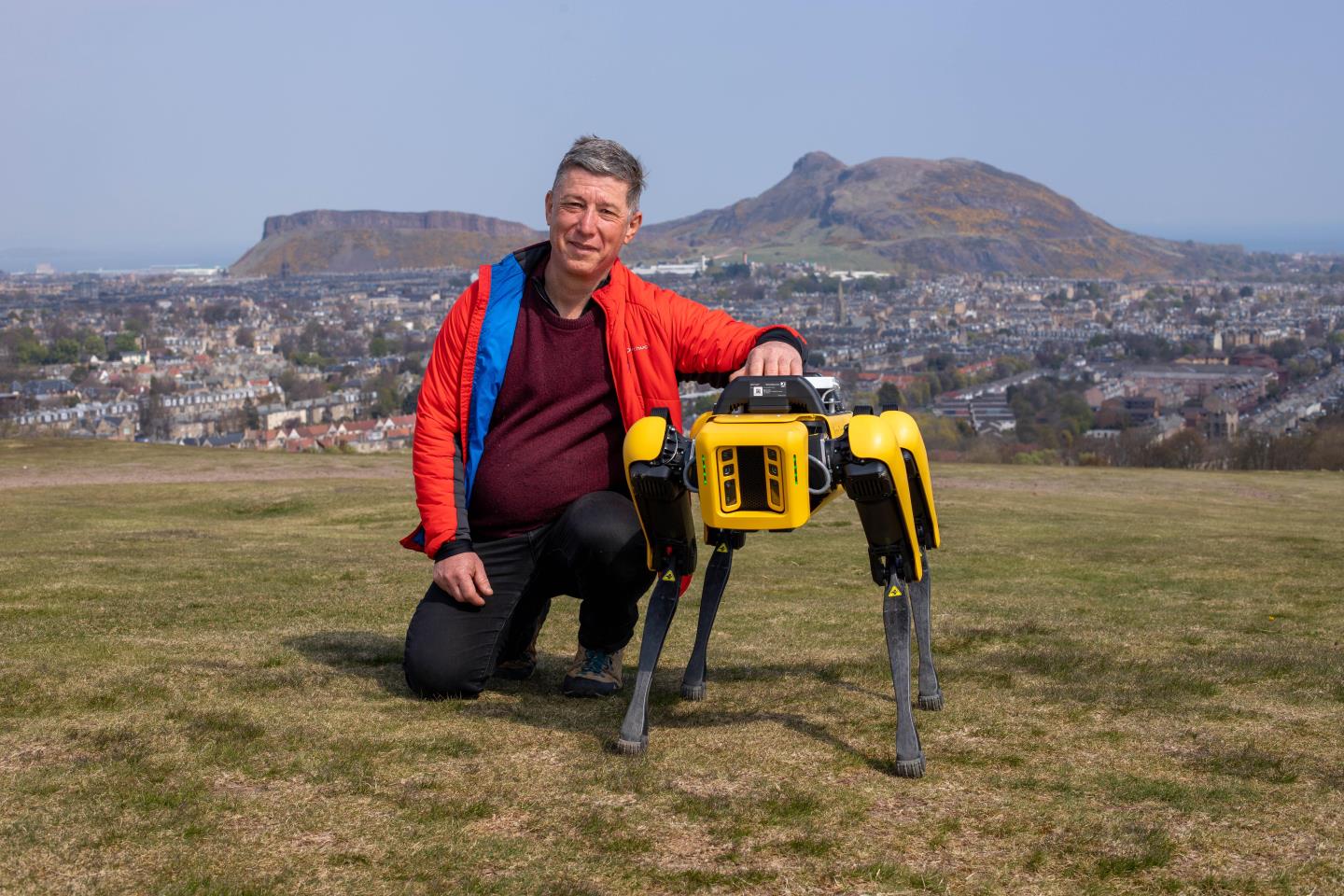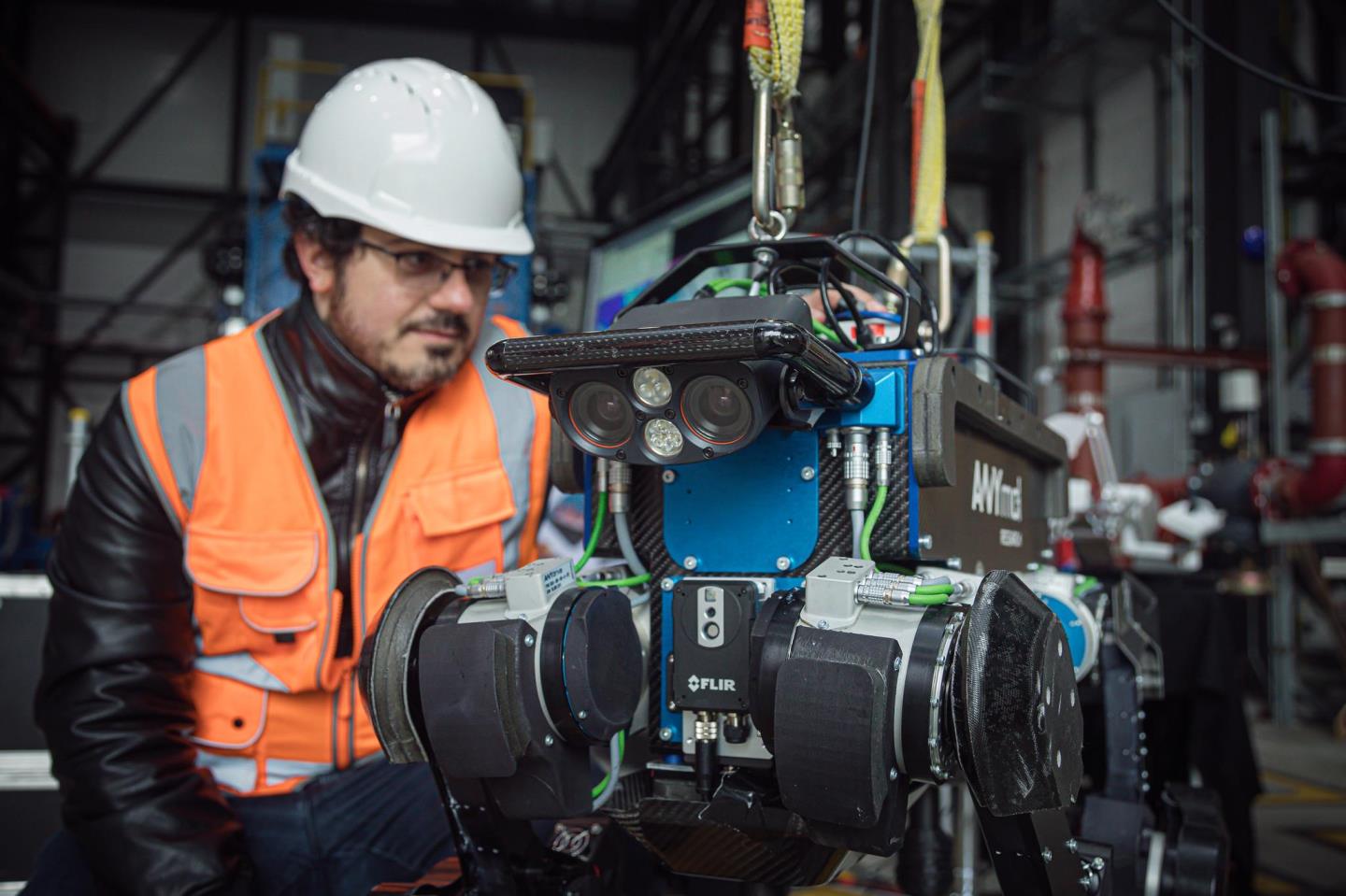
The rise of the machines – it’s not something that’s ever portrayed in a positive light in Sci-Fi movies or novels. But a new legion of souped-up robots is getting ready to boot up and make the offshore energy sector safer, keeping us out of harm’s way.
Robotics expert Yvan Petillot believes technology has improved so much in the last five years that robots can now make a real difference in the offshore energy industry.
For example, scientists have developed an autonomous drone that can independently inspect and repair damaged wind turbines. It can attach itself to structures with a robotic arm and deploy a sensor — and even do repair work.
Swiss firm ANYbotics’ autonomous, four-legged ANYmal robot recently carried out an inspection on one of Petronas’ oil and gas platforms. The duo were also getting down to work on an explosion-proof version.
Austrian firm Taurob’s tracked autonomous inspection robot has become a fixture at TotalEnergies’ Shetland Gas Plant. It can perform visual inspections, read dials, level gauges and valve positions, and detect and navigate around obstacles and humans. Equinor recently decided to introduce Taurob bots on platforms off Norway.
And autonomous underwater vehicles are increasingly used in the marine sector.
Despite all of these positive developments, Petillot, professor of robotics and autonomous systems at Heriot-Watt University, and co-lead at the £22.4 million National Robotarium, laments that autonomous robots are still not widely used and accepted.
Indeed, a new survey of 150 oil and gas decision makers – conducted by digital solutions marketplace Axora – found that robotics was the least likely of 10 technologies to be trialled or deployed. Others included cloud-based platforms and modern data architecture.
Petillot observed that a “strange conundrum” was at play. Although the oil and gas sector has more historical expertise in robotics, it is the renewables sector which is showing greater “desire” to adopt this technology.
Asked whether he had come up against a “race to be second” mentality in the oil sector, he said: “A little bit. The main thing they are driven by is business needs, ‘how much money are we going to save?’ And rightly so.
“But as we move through the energy transition we are going to stop being in the ‘business as usual phase’ for oil and gas.
“They will need to revisit a lot of the things they do and how they operate if they are going to shift to renewable energy.
“It’s maybe a good time to have a fresh look at technology.”
The wider oil and gas industry is showing signs of getting more involved, through initiatives like OLTER, or Offshore Light Touch Energy RAS (Robotic and autonomous systems).
Through this programme, which involves OGTC, the industry is trying to work out what it needs in terms of robotics, artificial intelligence and data to help it improve.
The National Robotarium has a lot to offer. A partnership between the Heriot-Watt and Edinburgh universities, it is involved in numerous eye-catching projects which would improve safety in the energy sector.
It is funded through the Edinburgh and South East Scotland City Region Deal and will move into a purpose-built base at Heriot-Watt’s campus next year.
The organisation generated headlines recently with the news that it would fit a £60,000 dog-like robot — part of the “Spot” range created by Boston Dynamics — with “telexistence” technology.
This lets humans experience an environment without being there, using devices like microphones and cameras to relay sounds and videos.
Researchers intend to test how the robot dog can help people who work in hazardous settings, including oil and gas platforms and refineries.
The robotarium is also working on the “Tel-Subsea” project, alongside Sheffield-based robotics software firm Cyberselves and Resolve Robotics, of Cumbria.
Project partners have been awarded Ministry of Defence funding to remove humans from dangerous situations by further enhancing telexistence technologies.
Immediate work will focus on bomb disposal and nuclear decommissioning, though wider applications could include offshore wind.
And researchers are involved in the development of a new method of communication.
It will let people ask robots questions – either through speech or text message — about what they are doing and why, and get a clear response from the machine.
The method, called MIRIAM (Multimodal Intelligent inteRactIon for Autonomous systeMs), is being deployed with one of the robots at Shetland Gas Plant.
This particular project is being carried out by the ORCA Hub, a consortium which is led by the Heriot-Watt and Edinburgh universities, and also includes Imperial College London and the Oxford and Liverpool universities.
Petillot said initiatives like Tel-Subsea and MIRIAM were steps along the journey to autonomy, though he is convinced humans will remain “in the loop” for a long time.
The professor, who in 2001 co-founded SeeByte, now a world leader in marine autonomy solutions, said he liked the concept of semi-autonomy, whereby a pilot can monitor a robot and take over the reins if the task gets too complex for the machine.
As autonomous systems improve in capability and reliability, the pilot effectively becomes more of a supervisor, able to keep an eye on multiple vehicles simultaneously.
“You have a human babysitting a robot, but as autonomy progresses, you will have one human babysitting maybe 10 or even 50 robots and giving many people access to live data, not just who is on site,” Petillot said.
“There will be remote ‘telepresence’ of multiple experts accessing data across world. This will make a step change in the quality of processing of data inspections.”
In years to come, Petillot expects to see pilots and HSE, inspection and corrosion monitoring experts all sitting in on remote inspections at the same time.
“To me that’s the future,” he said.
On the morning of Petillot’s interview with Energy Voice, a person in a London bedroom was operating a vehicle in a tank at Heriot-Watt.
Two weeks previously, technicians from Cyberselves were controlling another one at the bottom of the harbour at Port Seton near Edinburgh.
Petillot said long-range remote operations of this nature had been done before.
Telepresence, through the use of immersive virtual reality systems, made the work novel, he said, adding: “The person was effectively in the vehicle.”
Petillot conceded that oil and gas professionals were sceptical of, and had resisted, immersive technologies in the past because they weren’t up to scratch.
He said it was up to developers to demonstrate that new products are trustworthy and can help people do their jobs better.
Petillot believes this will soon happen because technology has moved on so much in recent years, driven by the gaming industry.
New systems can give vehicle pilots more awareness of what’s going on around them, leading to fewer accidents, he said.
“We need to engage with the pilots directly at some point,” said Petillot.
“Just because they didn’t like immersive systems a few years ago, it doesn’t mean they won’t like what we’ve got now. I think it’s time to revisit that.”
His “dream” is for the robotarium to become a place that “connects all the dots”.
It would be a bridge between SMEs, large service providers and end users, moving research toward commercialisation.
The feedback he has received tells him the robotarium’s work is on a par with what the best centres in the US are doing.
“If we play our cards right, we could put Edinburgh on the map as a place to do robotics,” Petillot said.
He also addressed the paranoia that robots spell the end for tens of thousands of human jobs.
The threat isn’t real, Petillot said, adding: “We’re going to create a new industry. You’re not going to replace all the specialists, because the data will still need to be analysed by people.
“Data science is moving forward but it’s not going to replace the human to really look at the data and understand the complexity.
“You’re also going to have to build and maintain the robots and monitor them.
“Robotics is a positive thing. It’s going to empower more inspection and safer use of resources and assets, whilst increasing the workforce.”
Recommended for you


 © Supplied by ORCA Hub
© Supplied by ORCA Hub © Supplied by Heriot-Watt Uni
© Supplied by Heriot-Watt Uni © Supplied by ORCA Hub
© Supplied by ORCA Hub